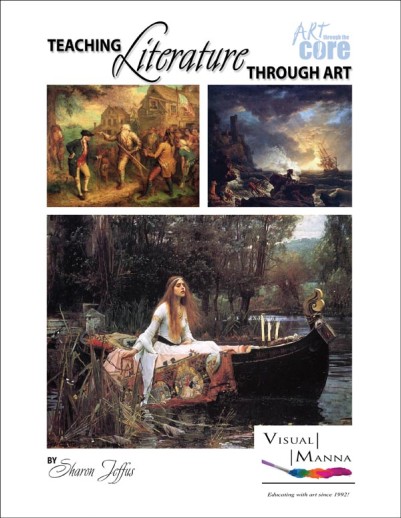We use cookies to make your experience better. To comply with the new e-Privacy directive, we need to ask for your consent to set the cookies. Learn more.
Teaching Literature Through Art
"Two-fer" studies are such a good idea. One course; two subjects covered. This particular combination literature and art makes so much sense. Richly illustrated with both full-color reproductions of masterpiece art plus step-by-step art lessons, this book will serve as a reference (for literary terms), an art appreciation course, and a drawing instruction manual. This should give you a little idea of its flexibility. The book is organized around different types/genres of literature: epic poetry, fable, science fiction, novel, and journal writing to name just a few. Each genre is defined plus examples cited (good suggestions for reading lists). Masterpiece art that relates in some way to the genre is provided, and several art projects are described and facilitated. To give you an idea of how this all works, take the example of the segment on free form verse. Starting with some biographical information on Robert Frost (an American master of free form verse), Mrs. Jeffus focuses on a specific poem The Road Not Taken giving website links to where it can be found and read. She then has two artwork examples of paths each very different from the other, and she describes the differences. Then citing another Frost poem this one mentioning a crow she has a short segment on painting birds and references Audubon providing an example of his work with the suggestion that the student reproduce the shapes found in the painting. She continues with the shape theme of the art lesson with examples of other bird paintings by Thorburn and a rabbit by Durer. With the rabbit picture, the student is led through the steps of creating a similar rabbit. Likewise with an owl painting. She ends the segment by noting how we can communicate certain characteristics by artistic additions. For instance, we communicate that an owl is "wise" by adding a graduation cap and glasses. This segment is longer than some but others follow a similar pattern.
There are no lesson plans, per se. However, there are reading suggestions throughout plus lots of art projects and even discussion questions. The tone of the course is conversational and comfortable. This course could be completed independently, I think, by a high school student or to varying degrees of accomplishment and with varying amounts of assistance by younger students. A short, illustrated vocabulary and a simple end-of-course test (define genres and give examples) conclude the book. 92 pgs, pb. ~ Janice
| Product Format: | Paperback |
|---|---|
| Brand: | Visual Manna |
| Author: | Sharon Jeffus |
| Grades: | 2-12 |
| ISBN: | 9781942446064 |
| Length in Inches: | 11 |
| Width in Inches: | 8.5 |
| Height in Inches: | 0.25 |
| Weight in Pounds: | 0.65 |

